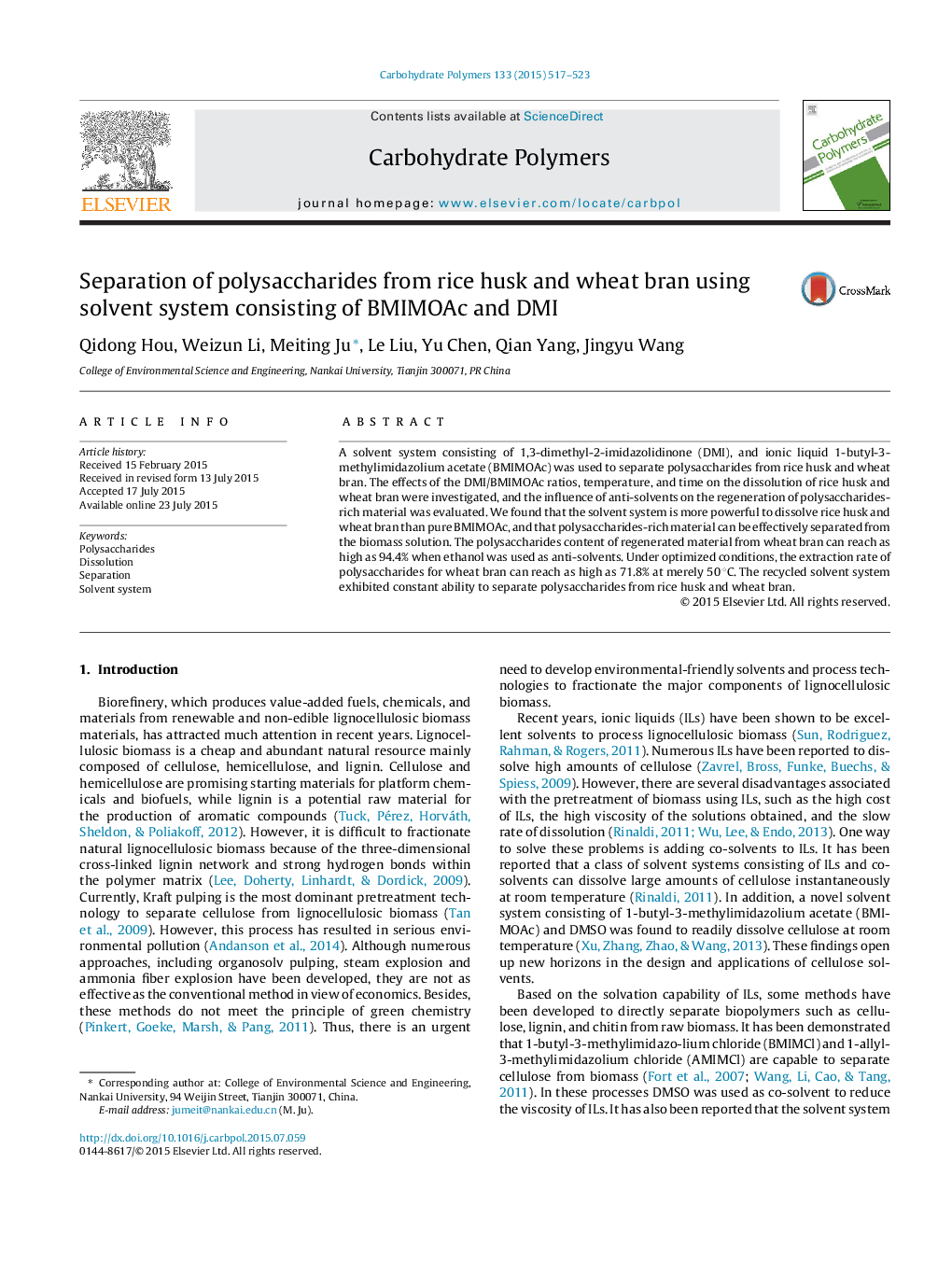| Article ID | Journal | Published Year | Pages | File Type |
|---|---|---|---|---|
| 7787777 | Carbohydrate Polymers | 2015 | 7 Pages |
Abstract
A solvent system consisting of 1,3-dimethyl-2-imidazolidinone (DMI), and ionic liquid 1-butyl-3-methylimidazolium acetate (BMIMOAc) was used to separate polysaccharides from rice husk and wheat bran. The effects of the DMI/BMIMOAc ratios, temperature, and time on the dissolution of rice husk and wheat bran were investigated, and the influence of anti-solvents on the regeneration of polysaccharides-rich material was evaluated. We found that the solvent system is more powerful to dissolve rice husk and wheat bran than pure BMIMOAc, and that polysaccharides-rich material can be effectively separated from the biomass solution. The polysaccharides content of regenerated material from wheat bran can reach as high as 94.4% when ethanol was used as anti-solvents. Under optimized conditions, the extraction rate of polysaccharides for wheat bran can reach as high as 71.8% at merely 50 °C. The recycled solvent system exhibited constant ability to separate polysaccharides from rice husk and wheat bran.
Related Topics
Physical Sciences and Engineering
Chemistry
Organic Chemistry
Authors
Qidong Hou, Weizun Li, Meiting Ju, Le Liu, Yu Chen, Qian Yang, Jingyu Wang,
